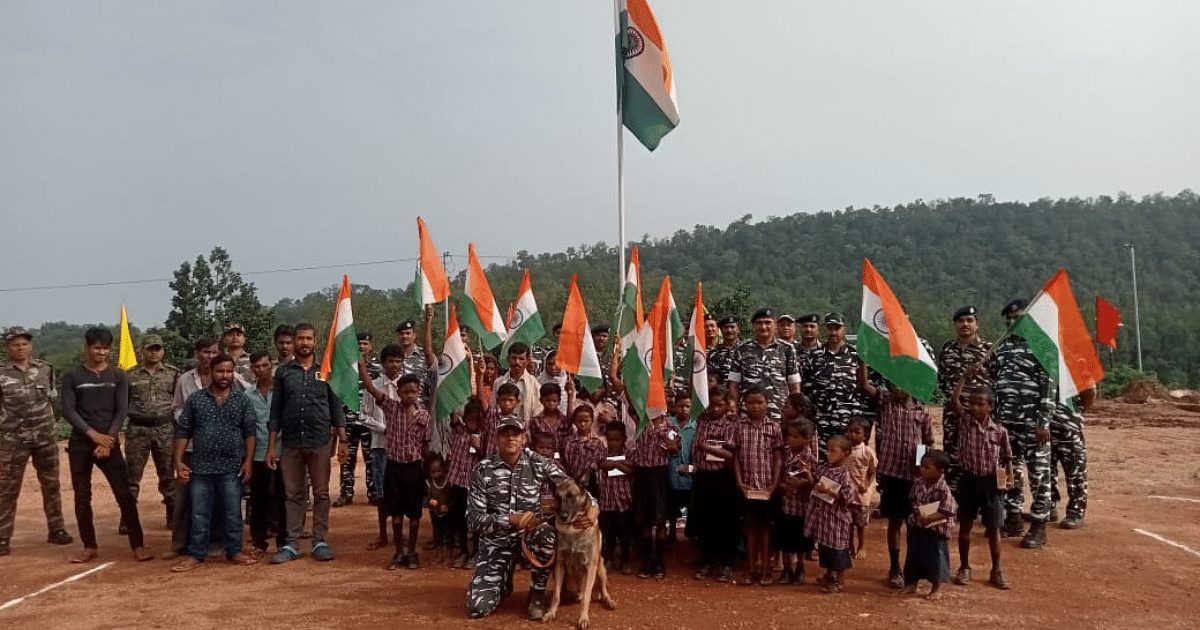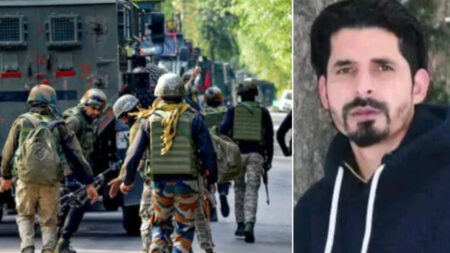For more than twenty years, the Chhattisgarh police, in collaboration with the Central Reserve Police Force (CRPF), has been engaged in a relentless battle against Left-wing extremism. In a significant development, they recently unfurled the Indian national flag in eight villages of the Maoist-affected Bastar region for the very first time. These villages, which had witnessed substantial bloodshed since the formation of the state in 2000, were historically marked by the presence of black and red flags associated with the banned Communist Party of India (Maoist).
The Communist Party of India (Maoist) is a proscribed political party and militant group in India that follows the ideologies of Marxism, Leninism, and Maoism. Their primary objective is to overthrow the “semi-colonial and semi-feudal Indian state” by means of an extended people’s war. The party was formed in 2004, on 21st September. It was an amalgamation of three units, the Communist Party of India that follows the Marxist-Leninist ideology, People’s War, and the MCCI (Maoist Communist Centre of India). The Indian government has classified the party as a terrorist organization under the Unlawful Activities (Prevention) Act since 2009.
In 2006, Prime Minister Manmohan Singh identified the Maoists as the most significant internal security threat to India. He noted that the movement predominantly draws support from marginalized and disaffected sections of society. According to government reports, in 2013, around 76 districts across the country were impacted by “left-wing extremism,” with an additional 106 districts influenced by their ideological reach. In more recent times, particularly in 2020, the party’s activities began to regain momentum, especially in regions like Telangana.
The state of Chhattisgarh has frequently been afflicted by the party’s militant operations, with the region experiencing the consequences of their actions.
Indian flag hoisted in 8 villages
Following this year’s Republic Day celebrations on January 26, joint security forces from the state and central government established eight police camps in remote areas spread across Kanker, Bijapur, and Sukma districts. Among these districts, Bijapur and Sukma, located in the southernmost region, have been particularly notorious as conflict zones. The eight villages where the Indian flag was hoisted are Silger Nala, Hiroli in Bijapur, Tondamarka, and Dabbamarka in Sukma district, and Chinnagelur, Timenar, Bedre, as well as Manhakal in Kanker.

As part of this initiative, the local children were educated about the significance of Independence Day and were greeted with treats like sweets and chocolates by the police. The Inspector-General of Police for the Bastar region, Sundarraj P, revealed that in the past 23 years since the inception of Chhattisgarh state, around 160 security personnel and nearly 120 civilians gave their lives. They lost their lives because of the extremism of the Left-wing in these villages.
Government applies three-pronged approach in Maoist areas
Sundarraj emphasized that despite the challenging circumstances, the villagers maintained their faith in democratic values and the spirit of freedom. The establishment of new security camps allowed them to experience the joy of celebrating a national festival in their own community by hoisting the Tricolor for the first time. The successful accomplishment of this feat was attributed to the government’s three-pronged approach known as “Triveni,” focusing on faith, development, and security (Vishwas, Vikas, and Suraksha).
However, it’s noteworthy that despite these positive strides, the security situation remains challenging. This year alone, 20 security personnel and 15 civilians lost their lives in attacks perpetrated by members of the Communist Party of India (Maoist).













